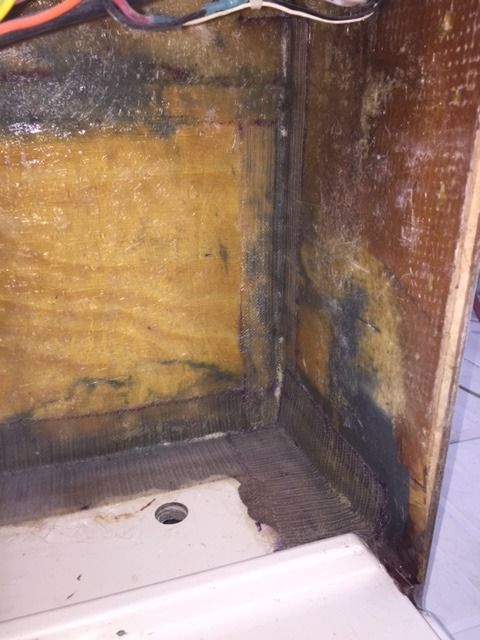
 |
|
#11
|
|||
|
|||
|
This is a very good discussion - an important one as so many come to learn about repairing, restoring SC's - the right way.
I really never put too much thought into flex of a hull as my repairs have been to fix an existing situation i.e. bad core, new transom, hatches etc. And, even with this repair, I feel like I am doing the same thing - repairing an existing situation. I cannot fathom that this joint area was ever meant to move ( I could be wrong here ). The teak doors attach to both sides of the companionway - when closed, if you hit a wave just right, the flex would crush the doors every time. Mcgill- you mention " The bulkhead is effectively is a minimal load-bearing wall creating a separate cabin ". Are you sure of this ? This area is the only area in the boat that provides lateral/ horizontal axis support other than the transom and the bow/deck area. My gut feeling is that the potter putty used here was meant to hold the joint in place. For it not to move. My original putty cracked ( again, its's an old boat ), so I was feeling the effect of that. To me, it makes little sense that the topside and liner were meant to 'float' on this bed of putty there. There was a generous amount of putty in there and in many of the areas in the joint, it still attached both the liner and the topside. Again, this is not to be contradictory, but to have a healthy discussion about the original intent and the proper remedy. Thx of your patience and expertise... |
|
#12
|
|||
|
|||
|
Putty is not meant to be structural but a means to fill a gap or void to reduce movement. Builders who use it understand it's limited adhesion properties and place it in strategic locations that are either concealed or can be cover with trim. Hull flex is not usually any movement that would shatter cabin doors but does affect non structural areas with very slight movement. These movements at opposing surfaces will likely crack in sacrifice to surrounding structural surfaces. Cracking at the putty line is the usual and least detrimental result and normally occurs where it is not seen.
It's starting to sound like you want to believe or justify glassing over the helm joints between the cap and deck liner. I'm telling you I have done that with problematic results and learned why it didn't work the hard way. You may be lucky and never have an issue but I have broken things on my Potter hull out of shear abuse charging rough seas. It's why I am installing real bulkheads throughout the hull and tying it all together solid. Hopefully it will take more of a beating than I can now and then they can bury me in it. Good luck with your repairs. I've done a lot on my rig and got a lot of satisfaction from it but the learning curve on structural repairs is a steep one I will certainly never completely master.
__________________
[b]The Moose is Loose ! |
|
#13
|
|||
|
|||
|
Your explanation makes perfect sense. Thank you for your been-there-done-that insight. Not sure what I'm going to do. But, your advice is noted !
PM Sent |
|
#14
|
|||
|
|||
|
Sometimes you just have to go with your gut - it has been right and wrong over the years and time will tell here as well.
Here are the pix of the repair: - I epoxied the seam. - I used (2) plys of mat to cover the replacement plywood. - Then, another (2) plys of mat to cover the seams and on top of that, - another (2) plys of 1708. It's solid. I appreciate everyone's insight and input. The only other options I saw were to not do it this way and to either; 1) bed the seam in 5200, or 2) use thickened cabosil/ chopped glass in the seam to allow for ridgidity but be the linch-pin and sacrificial in that if it needed to break, it would break there. Again, I opted to make it solid.   
|
 |
| Thread Tools | Search this Thread |
| Display Modes | |
|
|